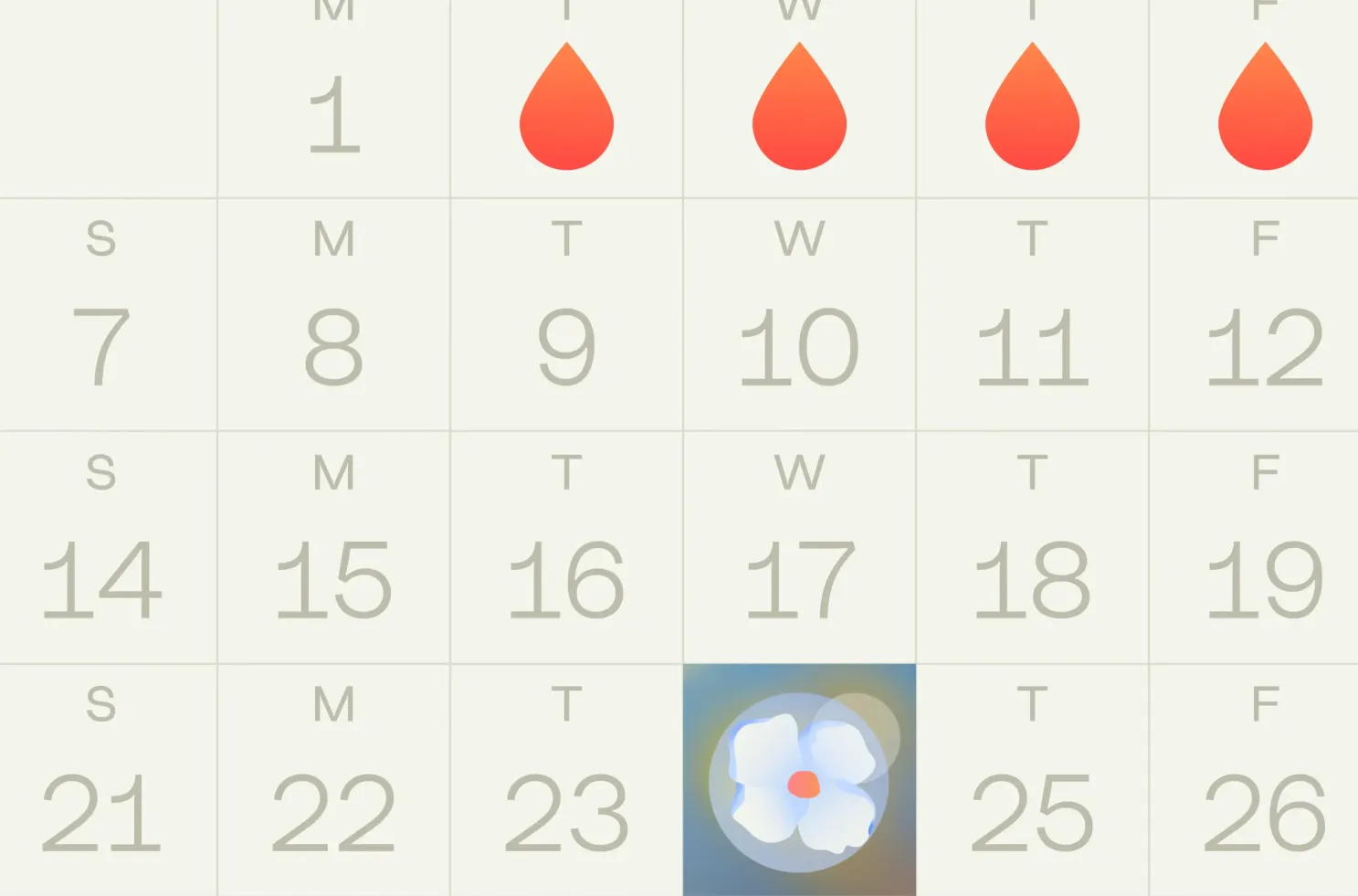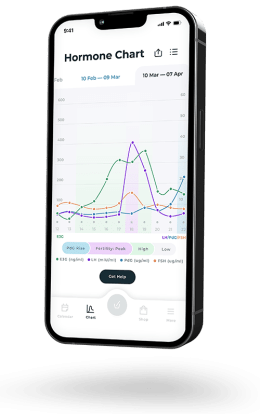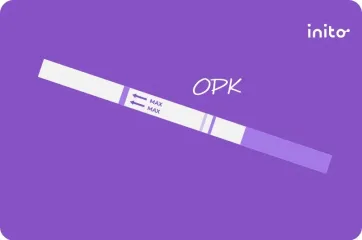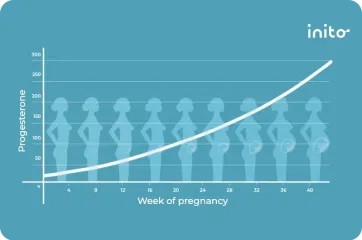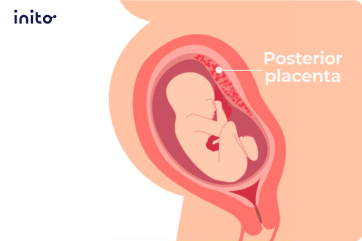Content table
Conception starts when the sperm fertilizes the egg. And the next step towards a successful pregnancy is the implantation process.
During implantation, the embryo (fertilized egg) attaches to the lining of the uterus. It’s the magic moment that officially marks when a pregnancy begins. Knowing when implantation happens gives you a better idea of when to take a pregnancy test.
But are online implantation calculators really able to give you the information you want? We have our doubts. Here’s why.
Key Takeaways
- Implantation calculators are online calculators that predict your implantation date based on either your ovulation date or your period date and average cycle length.
- These calculators estimate that implantation will occur 9 days after ovulation.
- However, implantation calculators cannot provide an accurate estimate of the exact date.
- There are too many variables that differ among women, including the average length of menstrual cycles and ovulation timing.
- Implantation calculators don’t work for women undergoing IVF.
- Testing your hormones to determine your date of ovulation can provide a more accurate estimate of your implantation range.
What Is an Implantation Calculator?
Implantation calculators are online tools that help identify your date of implantation.
All you have to do is answer a few questions, and it’ll tell you the estimated implantation date. These tools are called implantation calculators.
Knowing your implantation date has many benefits. It can help you:
- Understand why you’re having implantation symptoms, like bleeding or cramps
- Correlate symptoms with your tentative implantation date
- Predict where you stand in your pregnancy journey and map out the timeline ahead
- Determine when to take a pregnancy test
How Do Implantation Calculators Work?
Most implantation calculators are based on the fact that implantation typically occurs within six to 10 Days Past Ovulation (DPO). Statistically, implantation is most likely to be on the 9 DPO.
Implantation calculators give you an estimated window of days. This window is based on either your ovulation day or your last period and average cycle length. An implantation calculator simply adds six to 10 days to your ovulation date to find your implantation window. And if you’re getting one specific day (instead of a window), they assume implantation happens on the 9 DPO.
If you’re not sure when ovulation occurred, your implantation window can also be based on your period.
Input your last period and average cycle length. Ovulation typically occurs 12 to 14 days before your next menstrual period. Once you have an estimated ovulation day, add six to ten days to it for your implantation window.
How Accurate Are Implantation Calculators?
For about 84% of women, implantation typically occurs between 8 DPO-10 DPO. Estimating that implantation occurred on 9 DPO is a reasonably safe bet.
However, they’re not very accurate for the other 16% of women. Unfortunately, there’s no way to know which category you fall into.
The actual window for implantation can range from 6 DPO to 12 DPO. This leaves much room for error. Additionally, if you’re unsure about your ovulation day, the estimate may be off even more, especially if your typical cycle is slightly longer or shorter than average.
Implantation calculators are based on your average cycle length and last period date. They assume that ovulation for most women occurs 14 days before their next cycle. However, one study found that only 14% of women with 28-day cycles ovulated on Day 14.
The most common ovulation day was actually day 16. What’s more, the exact ovulation day was widespread over multiple days (ranging from day 11 to 20). And women with cycles shorter or longer than 28 days have a chance of ovulation that’s spread across an even wider number of days.
Another study found that the most common ovulation day was on Day 15. Women in the study had ovulation days that were spread out over 10 days for all cycle lengths.
As you can see, assuming that ovulation occurs 14 days before your next period is not accurate. These calculators don’t take your hormones into account, so they can’t tell you what’s actually going on in your body. As a result, you shouldn’t rely on them to give you an accurate implantation date.
And other studies have confirmed that most free smartphone apps aren’t accurate for tracking menstrual cycles.
Do Implantation Calculators Work for IVF?
Implantation calculators are not effective for women undergoing In Vitro Fertilization (IVF). Instead, implantation is calculated from the day of embryo transfer.
One study found implantation timing varied from 2.5 to 7.5 days after an embryo transfer. Implantation was calculated based on starting hCG levels. The age of the embryo can also affect when implantation occurs, so you should speak to your doctor to know more about your unique situation.
How Else Can You Know if Implantation Has Occurred?
Some symptoms can indicate whether implantation has occurred. But the following symptoms are possible. (Note: Not everyone has these symptoms, so the presence of these symptoms doesn’t confirm implantation and vice versa.)
- Spotting (bleeding between periods)
- Breast tenderness
- Cramps
- Fatigue
- Food cravings
- Mood swings
- Bloating and abdominal discomfort
When Should You Take a Home Pregnancy Test?
After implantation, levels of the pregnancy hormone Human Chorionic Gonadotropin (hCG) double every 48 hours. Wait until the first few days after your missed period (beyond 12-14 DPO) to take a pregnancy test. This gives hCG enough time to rise and show up in your urine for an accurate result.
Some women with high hCG levels can get a positive pregnancy test at 9 to 10 DPO. But this is early, and most pregnancy tests aren’t sensitive enough to show a positive result that soon.
One study found that at 9 to 10 DPO, urine hCG was only around 0.93 mIU/ml. However, common urine pregnancy tests need 20-25 mIU/ml to show a positive result.
Hold off for at least three to five days after you think implantation has occurred to take a home pregnancy test. This can help prevent a false negative.
Better Ways to Predict the Estimated Implantation Date
Knowing your ovulation day is helpful when trying to estimate implantation. While still not foolproof, your chances of estimating your implantation day are higher if you know when ovulation occurred.
You can use Inito Fertility Monitor to know when you ovulate. Inito is an all-in-one fertility monitor that measures four key hormones on a single test strip to predict and confirm ovulation.
Additionally, you can track your cycles to gain a better understanding of your hormone patterns and trends. Pay attention to your body and be aware of potential symptoms, including implantation cramping, bleeding, and others. However, remember that implantation symptoms can vary from person to person.
While it’s easy to get caught up in the calendar, try to keep a level head and take any calculations with a grain of salt. It takes time to know whether a successful pregnancy has been established or not. Try to be patient and keep busy as you wait until the right time to test.

FAQs
Implantation most commonly occurs 8 to 10 days after ovulation. But the range could be as much as six to 12 days.
The fertile window for conception is six days long and includes the four days before ovulation, ovulation day, and the day after ovulation. The implantation range is six to 12 days after ovulation. As a result, implantation could happen any time between six and 18 days after sex.
Levels of hCG actually begin to rise before implantation. But it takes a few days for it to rise enough for a home pregnancy test to detect the change.
Know more: How Long After Implantation Does hCG Rise?
If you experience implantation bleeding, it’ll happen during the time of implantation as the embryo attaches to the uterine lining, which is 6-12 days past ovulation.
You can test for pregnancy any time you like. But if you test too early, your hCG levels won’t be high enough to show a positive result. To avoid wasting your time with false negatives, you should wait to test for pregnancy for at least three to five days after you think implantation happened.
Implantation bleeding can happen during the time of implantation. If you have this symptom, you should wait at least three more days to take a pregnancy test. Waiting a little longer will give you a better chance of an accurate result.
You’re more likely to test positive if you wait at least three days after implantation to take a home pregnancy test.
BFP is an acronym that stands for “big fat positive.” It’s used in online forums to say someone had a positive pregnancy test.
Know more: The Ultimate Glossary of Fertility Acronyms: Decode the TTC Lingo
Was this article helpful?
- A Review of Mechanisms of Implantation: Development & Reproduction
- Time of Implantation of the Conceptus and Loss of Pregnancy: The New England Journal of Medicine
- Can Apps and Calendar Methods Predict Ovulation With Accuracy?: Current Medical Research and Opinion
- Real-Life Insights on Menstrual Cycles and Ovulation Using Big Data: Human Reproduction Open
- Evaluation of Smartphone Menstrual Cycle Tracking Applications Using an Adapted APPLICATIONS Scoring System: Obstetrics & Gynecology
- Differences in Implantation Timing After Embryo Transfer Based on Embryo Characteristics: Obstetrics & Gynecology
- Bleeding During Pregnancy: The American College of Obstetricians and Gynecologists
- Strips of Hope: Accuracy of Home Pregnancy Tests and New Developments: Geburtshilfe Frauenheilkde




